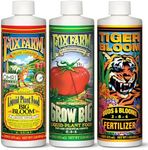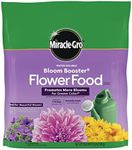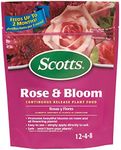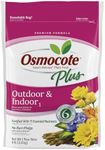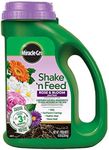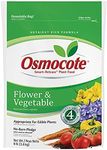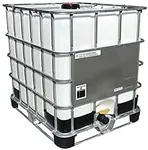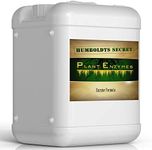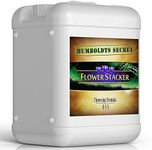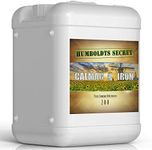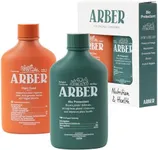Buying Guide for the Best Flower Fertilizers
Choosing the right flower fertilizer is essential for ensuring your plants grow healthy and vibrant. Fertilizers provide essential nutrients that flowers need to thrive, and selecting the right one can make a significant difference in the health and appearance of your plants. When picking a fertilizer, consider the specific needs of your flowers, the type of soil you have, and the growing conditions in your area. Understanding the key specifications of fertilizers will help you make an informed decision and keep your garden blooming beautifully.NPK RatioThe NPK ratio represents the percentage of nitrogen (N), phosphorus (P), and potassium (K) in the fertilizer. These are the primary nutrients that plants need. Nitrogen promotes leafy growth, phosphorus supports root and flower development, and potassium enhances overall plant health. For flowering plants, a balanced NPK ratio like 10-10-10 or one with higher phosphorus content like 5-10-5 is often recommended. Choose a ratio based on the specific needs of your flowers; for instance, if you want more blooms, opt for a fertilizer with higher phosphorus.
Type of FertilizerFertilizers come in various forms, including granular, liquid, and slow-release. Granular fertilizers are easy to apply and provide nutrients over time, making them suitable for general use. Liquid fertilizers are quickly absorbed by plants and are ideal for a quick nutrient boost. Slow-release fertilizers gradually release nutrients over an extended period, reducing the need for frequent applications. Choose the type based on your gardening habits and the specific needs of your flowers. For example, if you prefer less frequent feeding, a slow-release fertilizer might be the best option.
Organic vs. SyntheticOrganic fertilizers are made from natural materials like compost, manure, and bone meal, and they improve soil health over time. Synthetic fertilizers are chemically manufactured and provide nutrients more quickly. Organic fertilizers are generally safer for the environment and can enhance soil structure, but they may act more slowly. Synthetic fertilizers offer immediate results but can sometimes lead to nutrient imbalances if overused. Consider your gardening philosophy and the specific needs of your flowers when choosing between organic and synthetic options.
MicronutrientsIn addition to the primary nutrients (NPK), plants also need micronutrients like iron, manganese, zinc, and copper in smaller amounts. These micronutrients are crucial for various plant functions and overall health. Some fertilizers include these micronutrients, while others do not. If your soil is deficient in certain micronutrients, choosing a fertilizer that includes them can help address these deficiencies. Conduct a soil test to determine if your soil lacks any specific micronutrients and select a fertilizer that can supplement these needs.
Application MethodThe method of applying fertilizer can vary, including broadcasting, side-dressing, foliar feeding, and using spikes or stakes. Broadcasting involves spreading the fertilizer evenly over the soil surface, while side-dressing places it near the plant roots. Foliar feeding involves spraying a liquid fertilizer directly onto the leaves, and spikes or stakes are inserted into the soil to release nutrients gradually. Choose an application method that fits your gardening style and the specific requirements of your flowers. For instance, foliar feeding can be beneficial for quick nutrient absorption during the growing season.
